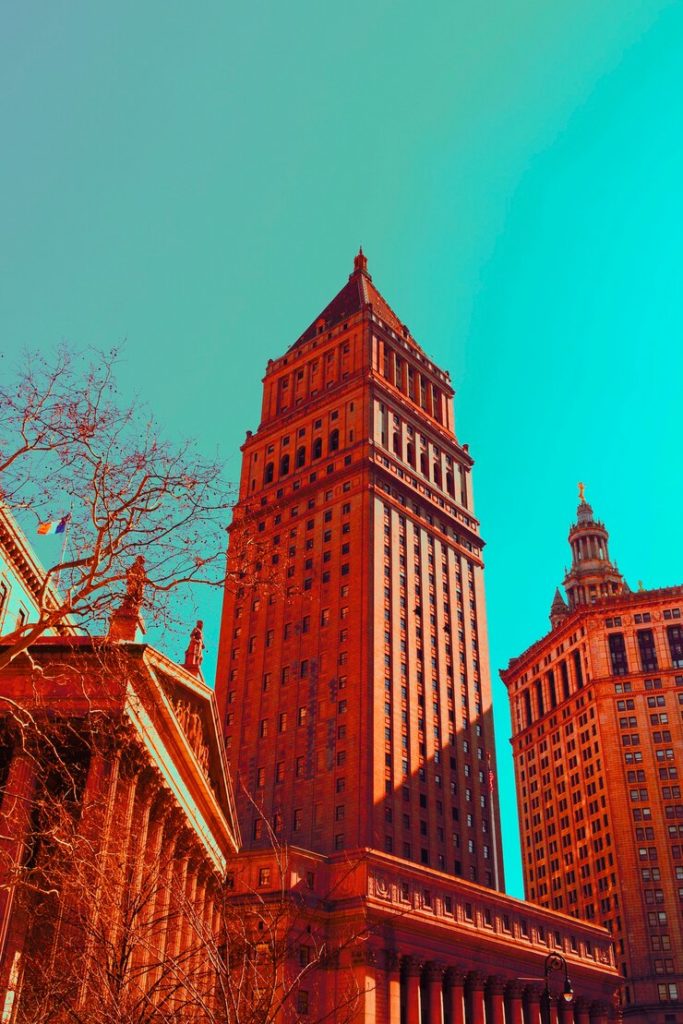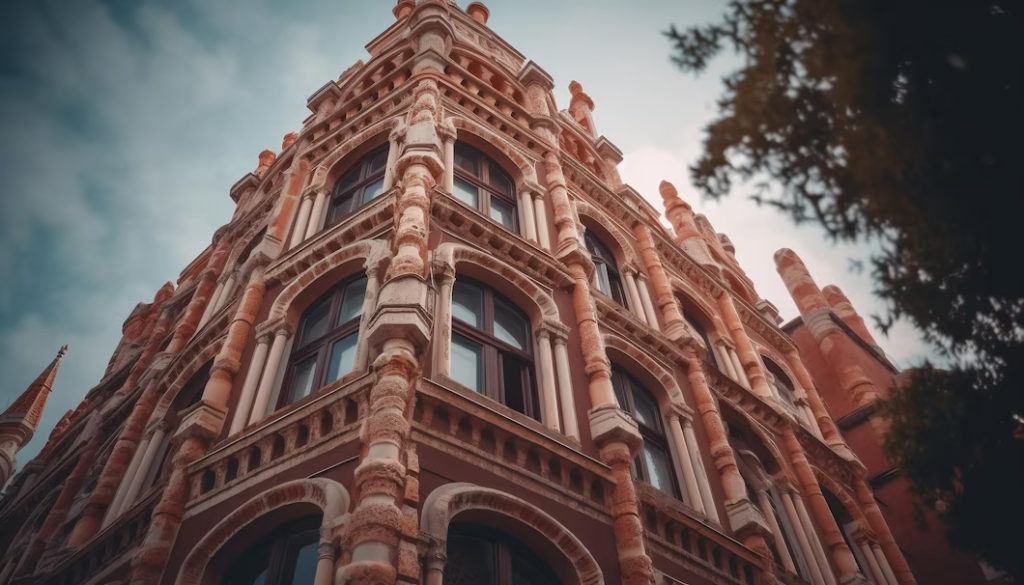
The Rise of Modern Architecture in Philadelphia
Philadelphia’s architectural designs have embraced modernism, thanks to influential architects like Louis Kahn. The city’s contemporary buildings showcase cutting-edge design principles, while its evolving skyline is dotted with iconic modern skyscrapers. Philadelphia’s modern architecture has gained worldwide attention, solidifying its place as a hub of architectural innovation.
The Influence of Louis Kahn on Philadelphia’s Architecture
Louis Kahn’s designs have left an indelible mark on Philadelphia’s architectural landscape. By seamlessly blending form and function, his masterpieces have redefined the city’s skyline. His emphasis on incorporating natural light has created awe-inspiring spaces that continue to inspire architects in Philadelphia today. From the Salk Institute to the Kimbell Art Museum, Kahn’s influence can be seen in iconic landmarks both within and beyond the city.
The Growth of Post-Modern Design
Post-modern architecture in Philadelphia’s buildings introduces playful elements, unconventional materials, and shapes. It challenges traditional norms, adding vibrancy and uniqueness to the cityscape. The juxtaposition of old and new is a key feature that defines postmodern design. This trend is expected to continue in the coming years.

Iconic Architectural Landmarks in Philadelphia
Philadelphia boasts world-renowned architectural landmarks. Independence Hall, the birthplace of American democracy, is a historic icon. The Fisher Fine Arts Library exudes Victorian charm, while Comcast Centre and Cira Centre impress with their modern marvels. The Barnes Foundation seamlessly blends neoclassical and modern design.
- Independence Hall – A Neoclassical Masterpiece: Independence Hall, a UNESCO World Heritage Site, showcases American democracy ideals with its iconic red brick facade and historically significant rooms, making it a must-visit for history enthusiasts.
- The Victorian Charm of The Fisher Fine Arts Library: The Fisher Fine Arts Library, situated on the University of Pennsylvania campus, is a stunning Victorian architectural gem in Chestnut Hill, attracting visitors with its intricate details and ornate facade.
- Modern Marvels: Comcast Centre and Cira Centre: Philadelphia’s modern architecture, exemplified by the Comcast Centre and Cira Centre, is characterized by their sleek designs, striking glass facades, and unique shapes, making them a hub of architectural innovation in the city.
- Barnes Foundation – A Blend of Neoclassical and Modern Design: The Barnes Foundation, a Philadelphia landmark, blends neoclassical and modern architectural elements, showcasing an extensive art collection and a cultural experience, enhancing its aesthetic appeal.
Influential Philadelphia Architects and Their Impact
Philadelphia has been home to influential architects throughout history. Julian Abele’s vision is evident in the Benjamin Franklin Parkway, while Frank Furness’s designs continue to inspire architects. Tod Williams Billie Tsien Architects have further enhanced Philadelphia’s architectural legacy. Their impact extends beyond the city, shaping architectural trends worldwide.
- How Robert Venturi Redefined Philadelphia’s Architecture: Robert Venturi, a visionary architect, revolutionized postmodern architecture by challenging traditional norms and celebrating diversity. His designs, known for their playful and ironic elements, significantly influenced the global architectural scene.
- The Vision of Frank Furness: Frank Furness, a Philadelphia architect, combined Gothic, Romanesque, and Victorian styles with steel and electricity, creating iconic buildings like the Pennsylvania Academy of the Fine Arts, which continues to inspire architects today.
- The Modernist Approach of Vincent Kling: Vincent Kling, a prominent Philadelphia architect, embraced modernist principles, focusing on simplicity, functionality, and practicality. His collaborations with Kahn and Pelli produced notable skyscrapers and public spaces.

Signature Styles of Philadelphia’s Top Architects
Philadelphia’s top architects are known for their distinct and recognizable design styles, which reflect the city’s rich architectural heritage. Each architect brings their unique vision and philosophy to their projects, contributing to the city’s diverse architectural landscape. Their designs blend tradition with innovation, creating iconic structures that define Philadelphia’s architectural identity.
The Quirky and Futuristic Style of César Pelli
César Pelli, a renowned architect, is known for his sleek and futuristic designs that incorporate innovative materials and technology. His projects can be found in major cities worldwide and often become iconic landmarks. Pelli’s work reflects his creativity and forward-thinking approach to architectural design.
The Neoclassical Elegance of Julian Abele
Julian Abele, the first African-American graduate of the University of Pennsylvania’s architecture program, is renowned for his neoclassical designs in Philadelphia. His buildings exude elegance and grandeur, drawing inspiration from classical architecture. Notable among his works is the Philadelphia Museum of Art. Today, Abele’s neoclassical designs continue to inspire architects, ensuring his legacy lives on.
The Innovative Design Philosophy of Denise Scott Brown
Denise Scott Brown’s innovative design philosophy prioritizes social engagement and urban planning. She challenges traditional gender roles in architecture and advocates for the integration of architecture and urbanism. Scott Brown co-authored the influential book “Learning from Las Vegas” with Robert Venturi, emphasizing the importance of context and community in her designs.
The Future of Architectural Design In Philadelphia
Philadelphia’s architectural scene is on the cusp of a transformation. With a focus on sustainability and eco-friendly designs, the city is embracing new trends. Digital design tools are revolutionizing the way architects create and explore innovative and experimental projects. The future of architectural design in Philadelphia is promising and exciting.
The Growth of Sustainable and Eco-Friendly Designs
Architects in Philadelphia are increasingly prioritizing sustainability in their designs. Green building practices, aimed at reducing environmental impact and promoting energy efficiency, are becoming more widespread. Philadelphia’s commitment to sustainability aligns with global trends, with a key focus on integrating nature and public spaces into sustainable designs.

The Emergence of Digital Design Tools
Architects in Philadelphia are embracing digital design tools, such as Building Information Modeling (BIM), for enhanced creativity and efficiency. These tools allow architects to create intricate and precise designs while revolutionizing the design and construction process. Virtual reality and augmented reality are also transforming the way architects present their designs, placing Philadelphia’s architects at the forefront of utilizing these cutting-edge technologies.
The Impact of Urbanization on Architectural Design
Architects adapt designs to accommodate the increasing urban population, resulting in innovative architectural solutions. With urbanization, architectural design becomes more focused on efficient land use in urban areas, driving the need for sustainable and eco-friendly designs. Urbanization is reshaping the way architects approach their work, creating a balance between aesthetics and functionality.
The Role of Institutions in Shaping Philadelphia’s Architecture
Institutions such as the University of Pennsylvania School of Design play a significant role in shaping architectural education and practices in Philadelphia. The Philadelphia Museum of Art serves as a showcase for architectural masterpieces, inspiring local designers. The Architectural Archives contribute to architectural research and preservation by preserving historical records. These institutions also facilitate collaborations between architects and other professionals in the city.
The Influence of University of Pennsylvania School of Design
The University of Pennsylvania School of Design has produced renowned architects whose design principles strongly influence architectural styles in Philadelphia. Graduates from the school play a vital role in the city’s architectural development, contributing their interdisciplinary approaches to design.
The Contribution of Philadelphia Museum of Art
The Philadelphia Museum of Art showcases architectural achievements through exhibitions and events. Its collection serves as inspiration for local architects and visitors. Architectural tours organized by the museum offer insights into Philadelphia’s architectural history. Workshops and lectures foster architectural creativity and innovation.
The Role of The Architectural Archives in Preserving the City’s Heritage
The Architectural Archives play a vital role in documenting and preserving Philadelphia’s architectural history and heritage. By serving as a valuable resource for research and restoration projects, the archives contribute to city planning and development. Through collaboration with architects and historians, they promote awareness and appreciation of Philadelphia’s architectural legacy.
How Has Philadelphia’s Architecture Influenced Other Cities?
Philadelphia’s architectural innovations have inspired designs globally, with architects from the city making significant contributions to architectural movements. The iconic skyscrapers in Philadelphia have set design trends for buildings in other urban centers. Additionally, the city’s emphasis on public spaces has influenced urban planning worldwide.
Philadelphia’s Impact on National Architectural Trends
Philadelphia’s architectural achievements have influenced design trends nationwide, with its rich historical architecture serving as a reference for preservation efforts. Its focus on sustainable architecture has shaped national practices, and its architectural conferences and events promote knowledge sharing and industry innovation.
Philadelphia’s Architectural Exports: What Other Cities Have Learned
The rich cultural heritage of Philadelphia is showcased in the Philadelphia Museum of Art. Louis Kahn’s designs seamlessly blend with landscape architecture, while Julian Abele’s contributions to the city’s skyline are significant. Frank Gehry’s unique style has left a lasting impact, and Philadelphia’s public spaces, like Benjamin Franklin Parkway, are admired worldwide.
Conclusion
In conclusion, Philadelphia’s architectural designers have left an indelible mark on the city’s landscape. From the neoclassical masterpieces to the modern marvels, each structure tells a unique story and showcases the talent and vision of these designers. The influence of renowned architects like Louis Kahn, Robert Venturi, and Denise Scott Brown has shaped the city’s architectural identity and set the stage for future innovations. As sustainability and digital design tools gain prominence, Philadelphia is poised to continue leading the way in innovative architectural design. The city’s rich history and vibrant culture have played a significant role in shaping its architecture, and this influence can be seen in the designs of other cities as well. For more information or to connect with Philadelphia’s top architectural designers, please contact us. Philadelphia’s architectural legacy will continue to inspire and captivate for years to come.







